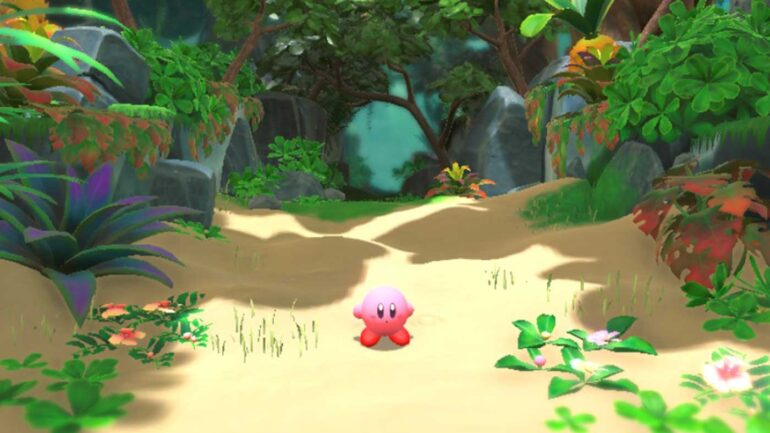When you think of Nintendo’s staple franchises, Kirby is one of those that comes to mind. The loveable little pink blob has seen multiple entries across every single Nintendo consoles, and without counting, I’d comfortably say that more Kirby games have released than most Nintendo franchises, but for some reason they’ve never quite reached the heights of Mario or Zelda, critically or commercially. After quite a bit of time with Kirby and the Forgotten Land, I feel like this is Nintendo finally pushing the franchise into the spotlight.
THE CHEAPEST COPY: $69 WITH FREE DELIVERY ON AMAZON
Whilst Kirby has been known to be mostly a side-scroller that incorporates different gimmicks that normally surround around his suction copy ability, right from the get-go Kirby and the Forgotten Land is a 3D adventure and the game really takes advantage of that from the onset.

If I were compare Kirby and the Forgotten Land to another Nintendo game it’d be closest to that of Super Mario 3D World. Whilst the game kicks off by plonking Kirby on an island and letting you loose through a level that’s quite open and grand, the game still takes place in a level by level scenario that can be navigated through an overworld (that we’ll talk about a little bit more later). Whilst each level is more open than what we’ve seen in a Kirby game, it’s more comparable to the likes of a platforming Mario level rather than Super Mario Odyssey’s worlds.
Whilst the game will feel really familiar to those that have played Kirby before, in the sense that Kirby floats and needs to rely on copying other enemy abilities to attack, there’s now a sense of exploration that I’d compare to the likes of Super Mario 3D world that feels like it takes advantage of Kirby’s core abilities that we’ve known for all these years.
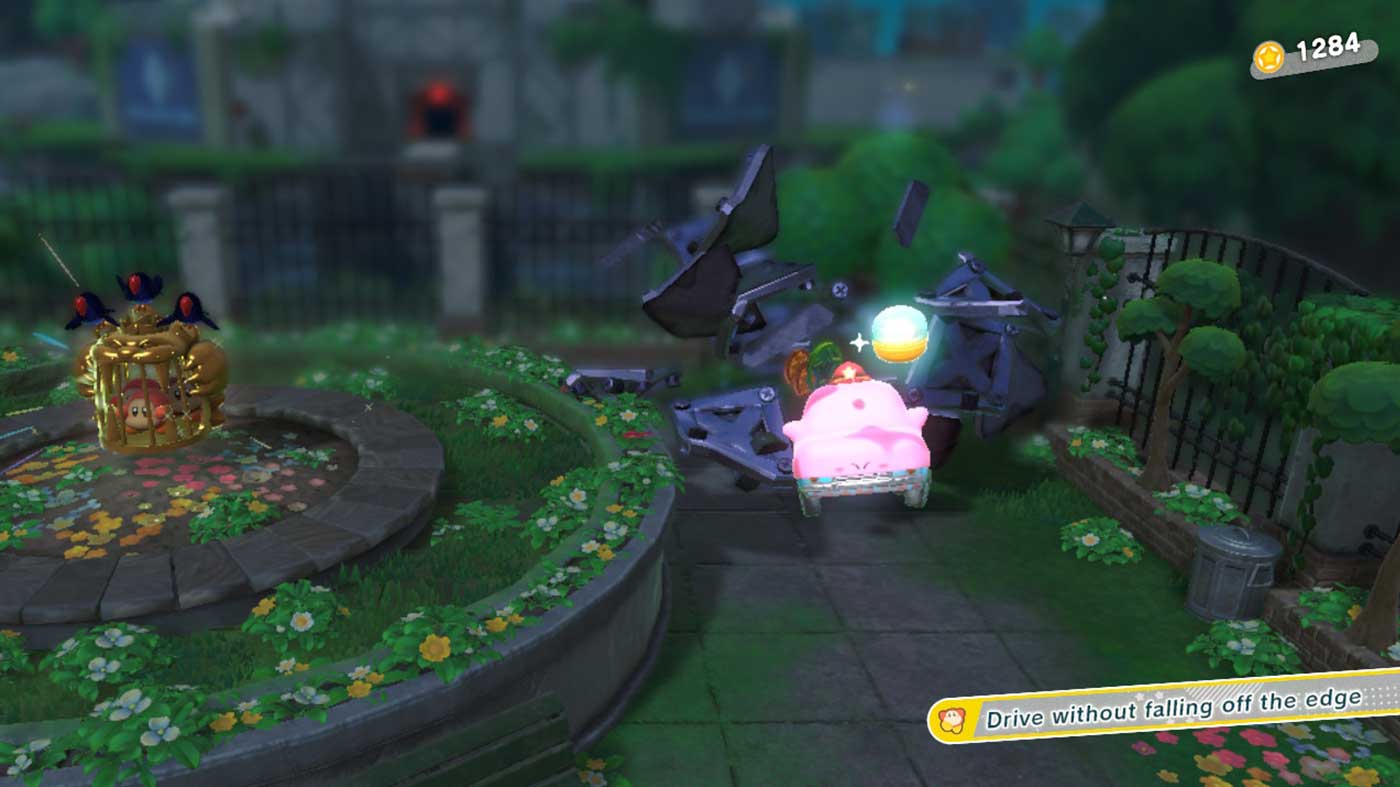
Even in the first world (which is all we can talk about right now), levels feel like they’re so different from one to the next, when compared to other Kirby games, which each normally revolving around a central theme, whether that be fire hydrants or boulders that chase you around the level Crash Bandicoot style.
A great emphasis is put on Mouthful mode and whilst it does feel a little gimmicky at times, I really do feel like it allows the game to go to greatest heights in its level design. For instance, Kirby becoming a car, a vending machine or a traffic cone (to name a few) allows him to take on new obstacles and enemies that feel more believable than if he just copied an enemies ability in order to get a sword. He can now take on these larger enemy types and break open walls and floors in a way that seems absolutely ridiculous, yet somewhat believable. One of the most interesting Mouthful abilities was Stair Kirby, that literally let Kirby swallow a set of stairs that I’d need to use to access different areas, opening up puzzles and such. It’ll be interesting to see how well the game keeps throwing up objects as the game progresses and whether this become stale.
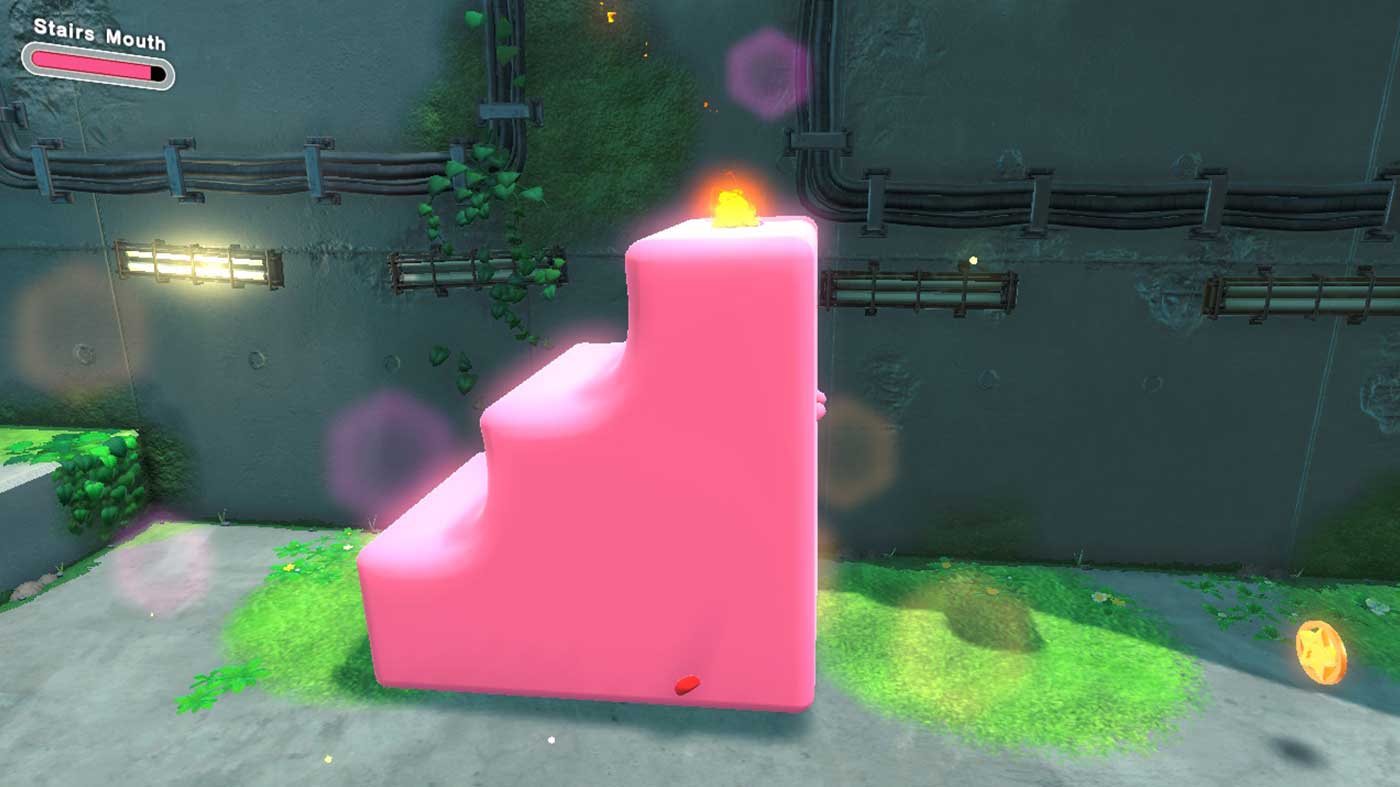
One concern I have at this time is that the game still feels easy, even on the mode that is supposed to be harder, I never died or felt like I even came close, but it’s still early days and I hope that we see more intense puzzles and enemy encounters later on. The game introduces a mission mechanic in each level and I was surprised with how much thought was put into them.
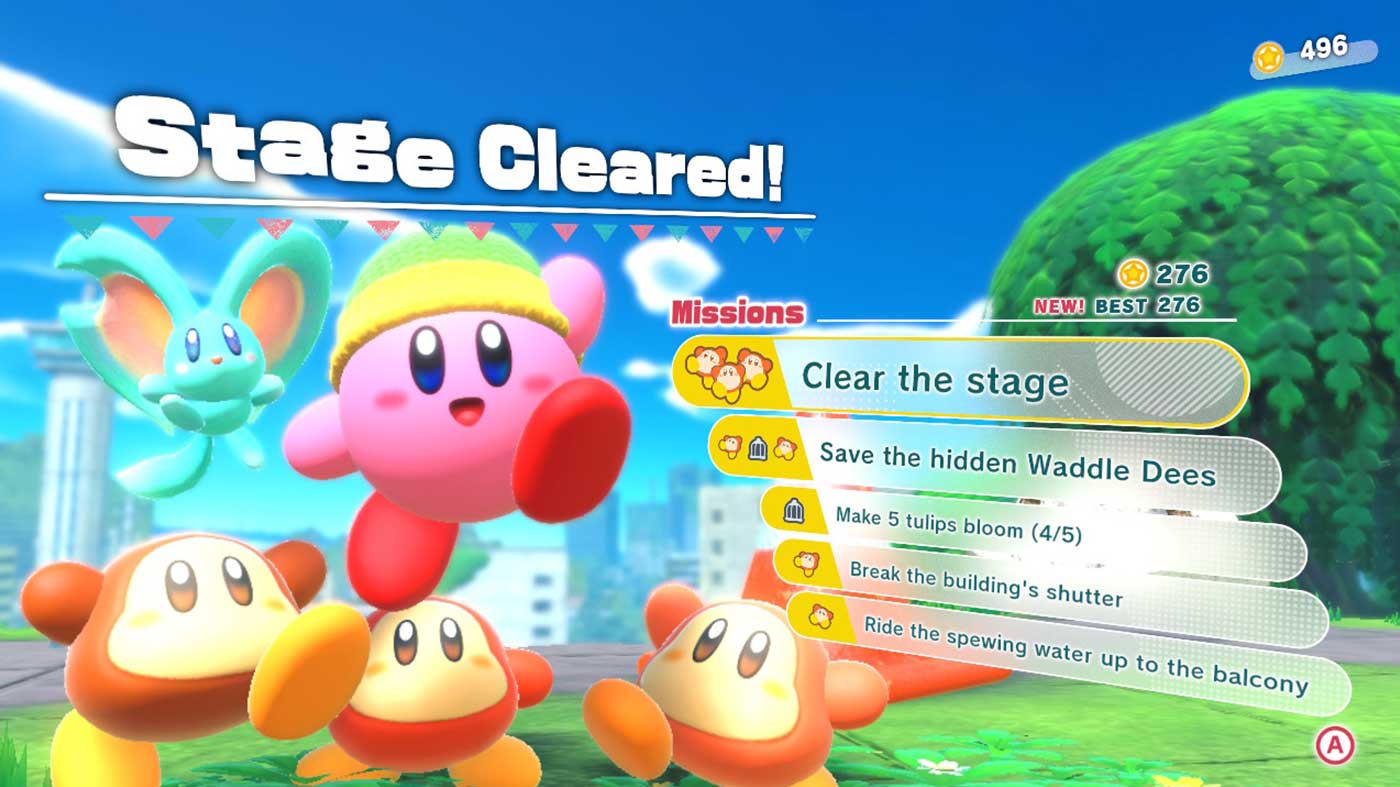
There’s five missions in each level and they range anywhere from finding hidden Waddle Dees, to breaking into secret areas, to helping flowers blossom and all kinds of things, and I think a huge amount of replayability is going to come from that. It’s worth mentioning that everything can be played in co-op too with the second player taking over a Waddle Dee with a spear.
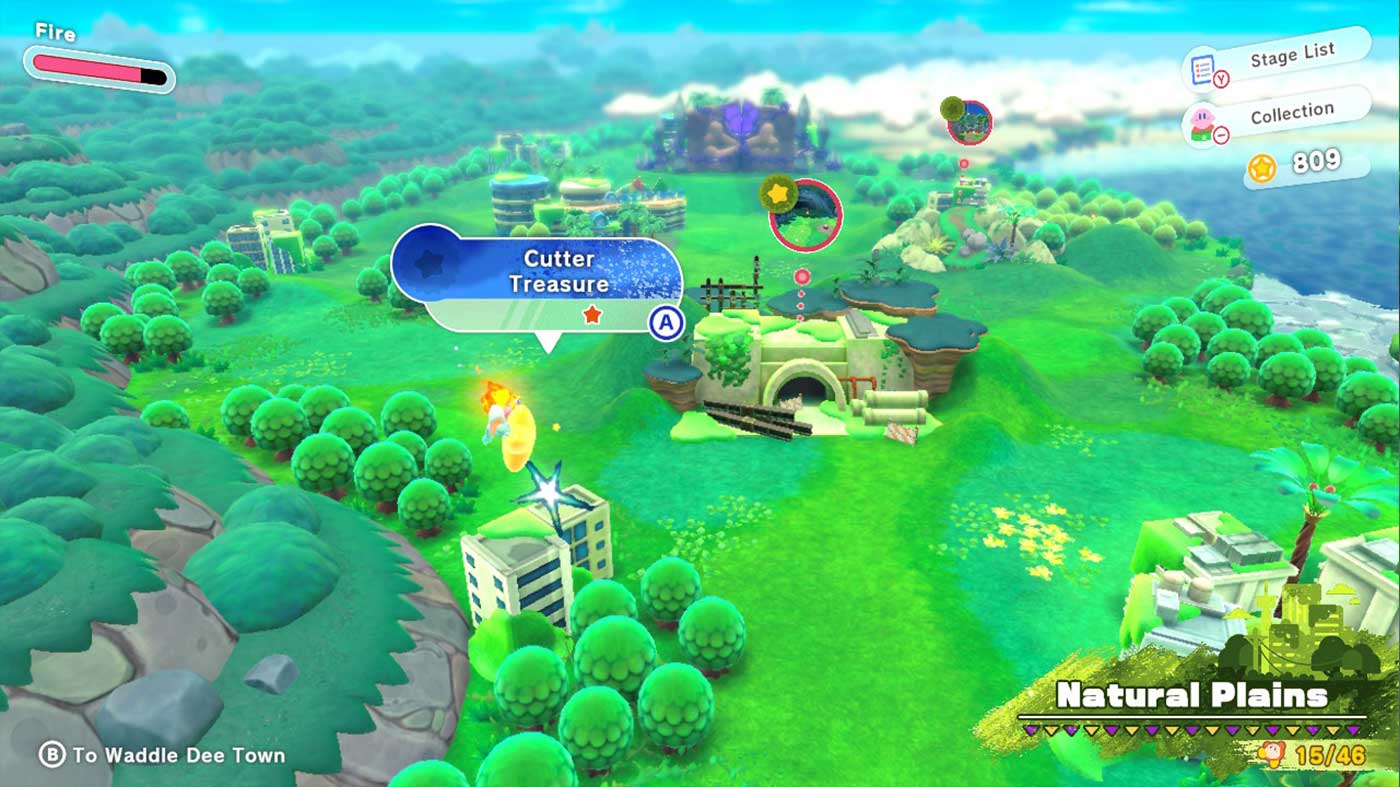
As you progress through each world, you will unlock Treasure Road levels. These levels make you use copy abilities that you’ve just used in an earlier level to complete challenges to unlock more Waddle Dees. There’s quite difficult time trials in each of these too that I was absolutely obsessing over.
The incentive for collecting Waddle Dees is that the more you collect, the more store and locations you will open in the central hub called Waddle Dee Town, which is a lot more useful than I was expecting, playing host to locations such as the Waddle Dee Weapon Shop. In the shop, you can not only set which power-up Kirby currently has equipped, but you can also upgrade each power-up, so that it has more power or a different extra little special something to it. This is done using coins and blueprints that I’m assuming you unlock as you play through the game.
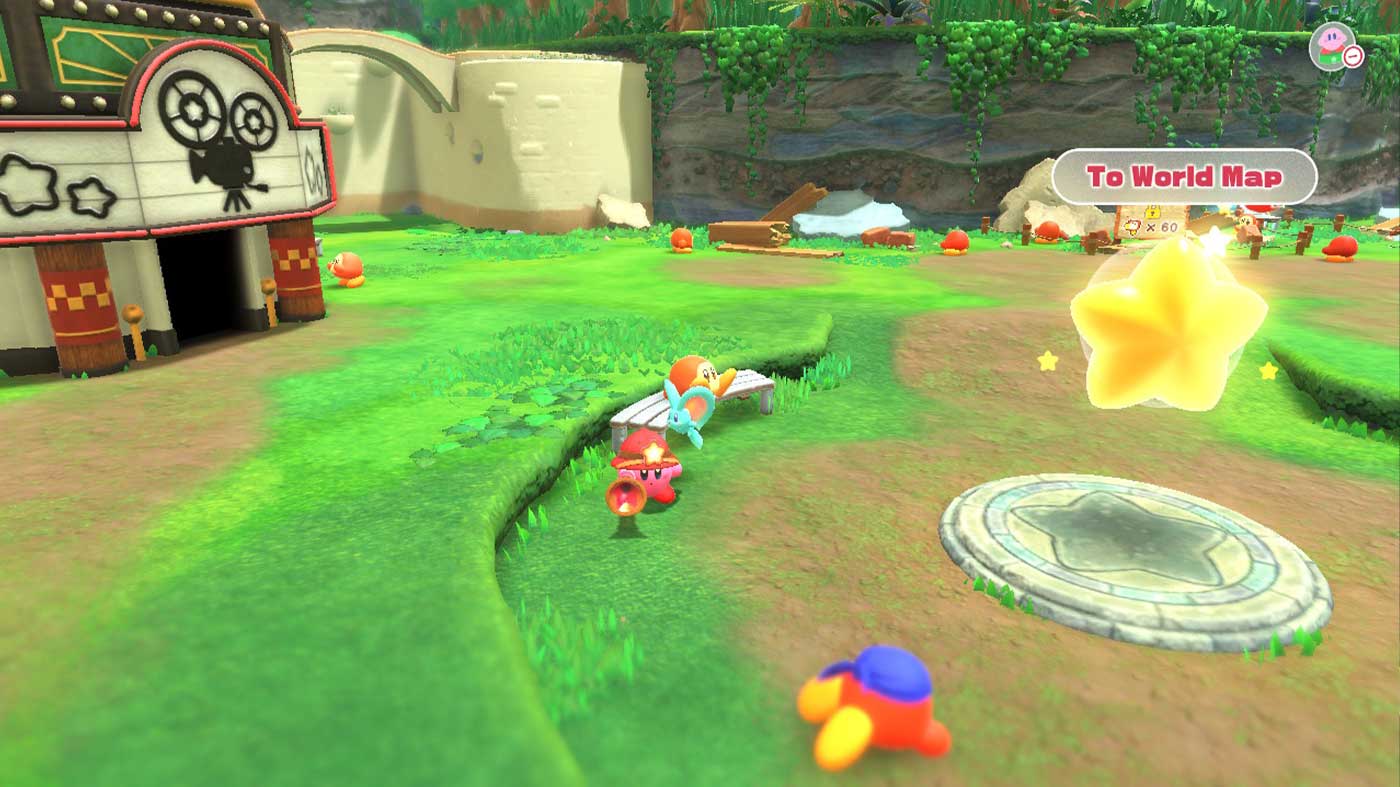
The game looks absolutely stunning and far more detailed than any Kirby game before it, but at least on handheld, the frame rate did seem like it was chugging at certain times. I don’t want to harp on about performance as it is what it is on the Switch these days, but really, the design of this game so far has been that good, that it didn’t affect my time with it at all.
All-in-all, Kirby and the Forgotten Land isn’t the big open-world spectacle that I was expecting, but it still is really damn good so far, and there’s been a lot of love given to this game, which feels long deserved for Kirby, and I can see this going on to be one of those games that live in a lot of Switch libraries, and for good reason, because it’s shaping up to be absolutely great.
Kirby and the Forgotten Land launches on Nintendo Switch on March 24th. The cheapest copy is currently $68 with free delivery on Amazon.


